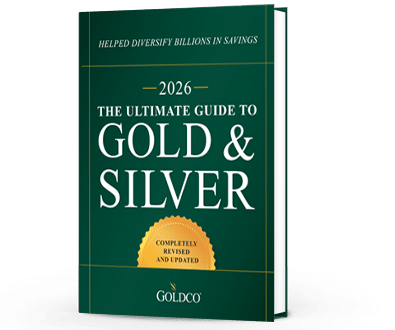Gold’s Pullback Is Healthy, Not Worrisome
After a historic, torrid run that took gold north of $4,000 per ounce, the recent retracement was not only likely: it’s healthy Large, trend-defining moves rarely travel in straight lines, and in...
Precious Metals

While pension plans have all but disappeared from private sector workplaces, significant numbers of public employees still expect to receive pensions when they retire, and indeed in many cases depend on those pension plans for their retirement income. But, like most pension plans in the US, these public pension plans are woefully underfunded. And unless soon-to-be retirees have also saved up their own money for retirement, their retirement dreams could end up becoming a nightmare.
The poor financial condition of most pension plans in the US is a crisis that is flying under the radar, much like the crisis facing Social Security. But just like Social Security, it’s a crisis that could affect the well-being of millions of Americans. What can you do to ensure that your retirement plans don’t vanish into thin air?
Retirement planning has long depended on the model of the “three-legged stool.” Pensions, Social Security, and private savings were the three legs upon which retirement savings were supposed to depend. That provided an element of diversification so that in case any one of those legs were to erode, the other two would keep the stool supported.
In practice, too many employees and investors have put all of their eggs into one basket. If they have a pension plan, they assume that the pension plan is fully funded and will be able to pay out their retirement benefits in the future. If they expect to get Social Security, they may expect Social Security to provide the majority of their retirement income. And if they have private savings, they may plow everything into stock markets, hoping for a continuing bull market that will keep growing their retirement savings into retirement.
The model of the three-legged stool has largely broken down, as Social Security is facing severe financial difficulties and pension plans are at risk of collapse. That means that those saving for their own retirement will have to rely increasingly on personal savings. And that means thinking of alternatives to pension plans and Social Security.
Pension plans, especially in the public sector, have very often relied on overly optimistic expectations of asset growth. In many cases they expect to see annual returns of around 8% per year. While that may not have been unreasonable during the stock market boom of the ‘80s and ‘90s, when stock markets were averaging 15% annualized gains, those assumptions are completely out of touch with current market reality.
Stock markets have averaged annualized gains of 4-5% per year since the turn of the century, far lower than during the ‘80s and ‘90s, and far lower than their long-term average. As a result, contributions to pension plans have been insufficient to pay for all the benefits that plans are expecting to pay out. In some poorly run states such as Illinois and New Jersey, many plans are funded at far less than 50%. And with the US economy deteriorating as a result of the coronavirus shutdowns, some could fall to as low as 3.6% funded over the next few years, giving them only enough money to pay out three months worth of retirement benefits. Within the next 5-10 years, numerous pension plans could find themselves running out of money.
The danger with many of these pension plans is that they risk becoming “pay as you go” systems, similar to how Social Security will operate once its trust fund is depleted. Once pension plan assets are all paid out, the only way for retirees to receive pension benefits is through current contributions from employees and employers. That could leave many retirees receiving but a small fraction of what they had been promised when they first started working.
Those who still participate in pension plans need to realize that there’s a very strong possibility that their pension benefits may disappear into thin air within the next decade. And they need to protect themselves against that possibility by maximizing their own retirement savings. The closer you are to retirement, however, the more difficult it will be to do that.
If you’re within 5-10 years of retirement, and you expect to receive a pension in retirement, do you know how well-funded your plan is? You may find out that your pension plan is severely underfunded, which will put your retirement at risk. And you’ll have to do everything you can today to make sure that you have enough money when you retire.
Building up your own retirement savings is more important than ever, and it shouldn’t be difficult to do. If your job offers a 401(k), 403(b), or similar tax-advantaged retirement account, you should have already been taking advantage of it. If you haven’t been investing in these tax-advantaged accounts, now’s the time to start. You should also start thinking about contributing to an IRA account in order to maximize your tax-advantaged retirement savings. And if you’re over 50, you can take advantage of catch-up contributions to build up your retirement savings even further.
Investing in the right assets is key too, along with diversifying your investment portfolio to ensure that your assets aren’t overly exposed to one asset class or another. That means investing not just in mix of stocks and bonds, but also hedges such as gold that can help protect your retirement savings against loss in the event of a stock market crash. With a gold IRA, you can even combine the best of both worlds, gaining the benefits of gold’s wealth protection while still enjoying the tax-advantaged treatment of an IRA.
Whatever investment decision you choose to make, know that your retirement is riding on your shoulders. Don’t allow yourself to get complacent and trust that promises made to you will be kept. If you don’t make an effort to invest in your future today, you could end up regretting that when you reach retirement with little to show for your decades of hard work.

